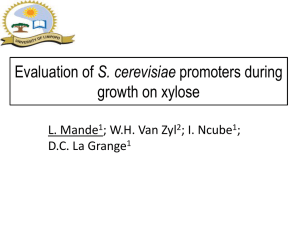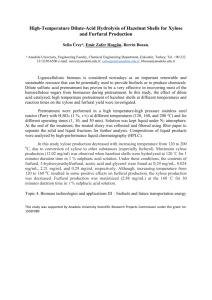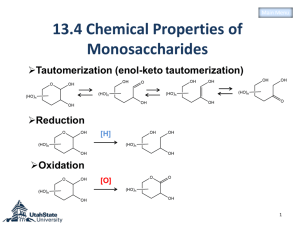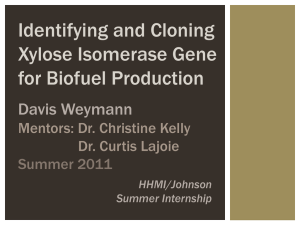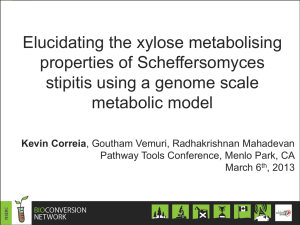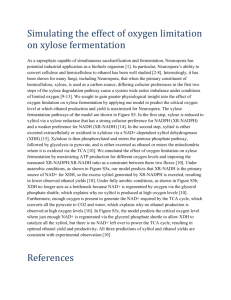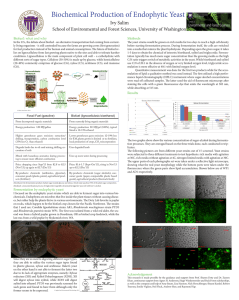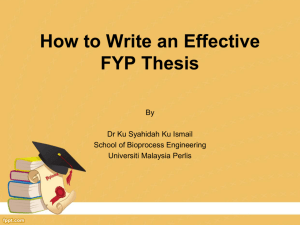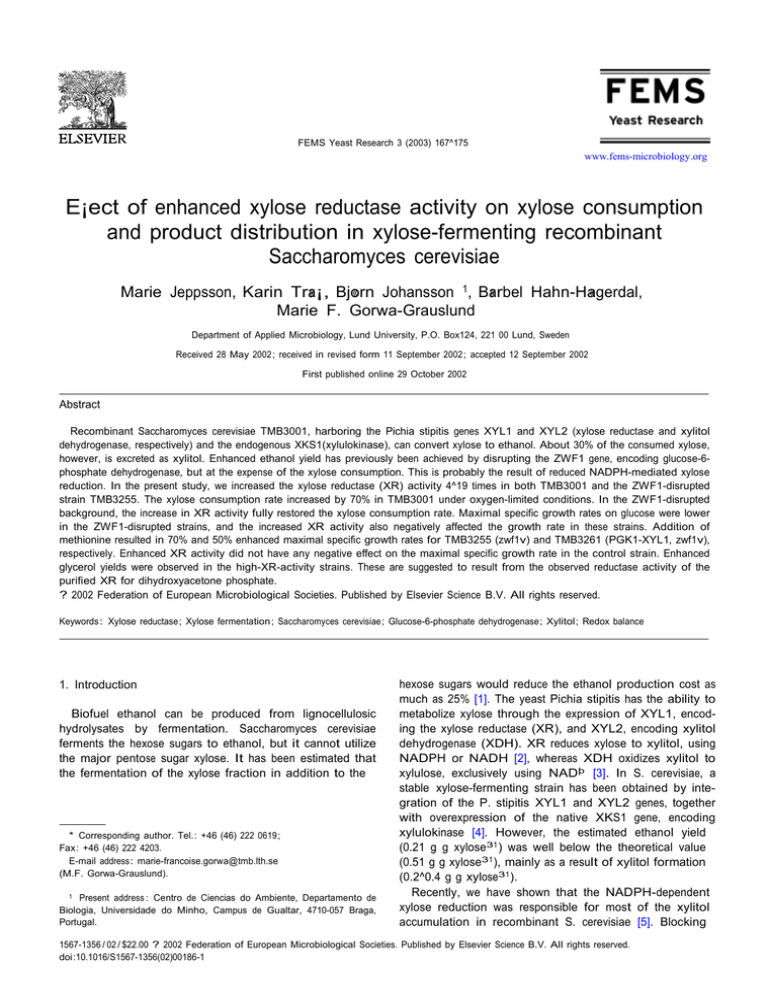
FEMS Yeast Research 3 (2003) 167^175
www.fems-microbiology.org
E¡ect of enhanced xylose reductase activity on xylose consumption
and product distribution in xylose-fermenting recombinant
Saccharomyces cerevisiae
Marie Jeppsson, Karin Tra«¡, Bjo«rn Johansson 1, Ba«rbel Hahn-Ha«gerdal,
Marie F. Gorwa-Grauslund
Department of Applied Microbiology, Lund University, P.O. Box124, 221 00 Lund, Sweden
Received 28 May 2002 ; received in revised form 11 September 2002 ; accepted 12 September 2002
First published online 29 October 2002
Abstract
Recombinant Saccharomyces cerevisiae TMB3001, harboring the Pichia stipitis genes XYL1 and XYL2 (xylose reductase and xylitol
dehydrogenase, respectively) and the endogenous XKS1(xylulokinase), can convert xylose to ethanol. About 30% of the consumed xylose,
however, is excreted as xylitol. Enhanced ethanol yield has previously been achieved by disrupting the ZWF1 gene, encoding glucose-6phosphate dehydrogenase, but at the expense of the xylose consumption. This is probably the result of reduced NADPH-mediated xylose
reduction. In the present study, we increased the xylose reductase (XR) activity 4^19 times in both TMB3001 and the ZWF1-disrupted
strain TMB3255. The xylose consumption rate increased by 70% in TMB3001 under oxygen-limited conditions. In the ZWF1-disrupted
background, the increase in XR activity fully restored the xylose consumption rate. Maximal specific growth rates on glucose were lower
in the ZWF1-disrupted strains, and the increased XR activity also negatively affected the growth rate in these strains. Addition of
methionine resulted in 70% and 50% enhanced maximal specific growth rates for TMB3255 (zwf1v) and TMB3261 (PGK1-XYL1, zwf1v),
respectively. Enhanced XR activity did not have any negative effect on the maximal specific growth rate in the control strain. Enhanced
glycerol yields were observed in the high-XR-activity strains. These are suggested to result from the observed reductase activity of the
purified XR for dihydroxyacetone phosphate.
? 2002 Federation of European Microbiological Societies. Published by Elsevier Science B.V. All rights reserved.
Keywords : Xylose reductase ; Xylose fermentation ; Saccharomyces cerevisiae ; Glucose-6-phosphate dehydrogenase ; Xylitol ; Redox balance
1. Introduction
Biofuel ethanol can be produced from lignocellulosic
hydrolysates by fermentation. Saccharomyces cerevisiae
ferments the hexose sugars to ethanol, but it cannot utilize
the major pentose sugar xylose. It has been estimated that
the fermentation of the xylose fraction in addition to the
* Corresponding author. Tel. : +46 (46) 222 0619 ;
Fax : +46 (46) 222 4203.
E-mail address : marie-francoise.gorwa@tmb.lth.se
(M.F. Gorwa-Grauslund).
1 Present address : Centro de Ciencias do Ambiente, Departamento de
Biologia, Universidade do Minho, Campus de Gualtar, 4710-057 Braga,
Portugal.
hexose sugars would reduce the ethanol production cost as
much as 25% [1]. The yeast Pichia stipitis has the ability to
metabolize xylose through the expression of XYL1, encoding the xylose reductase (XR), and XYL2, encoding xylitol
dehydrogenase (XDH). XR reduces xylose to xylitol, using
NADPH or NADH [2], whereas XDH oxidizes xylitol to
xylulose, exclusively using NADþ [3]. In S. cerevisiae, a
stable xylose-fermenting strain has been obtained by integration of the P. stipitis XYL1 and XYL2 genes, together
with overexpression of the native XKS1 gene, encoding
xylulokinase [4]. However, the estimated ethanol yield
(0.21 g g xylose31 ) was well below the theoretical value
(0.51 g g xylose31 ), mainly as a result of xylitol formation
(0.2^0.4 g g xylose31 ).
Recently, we have shown that the NADPH-dependent
xylose reduction was responsible for most of the xylitol
accumulation in recombinant S. cerevisiae [5]. Blocking
1567-1356 / 02 / $22.00 ? 2002 Federation of European Microbiological Societies. Published by Elsevier Science B.V. All rights reserved.
doi :10.1016/S1567-1356(02)00186-1
168
M. Jeppsson et al. / FEMS Yeast Research 3 (2003) 167^175
the oxidative pentose phosphate pathway (PPP) lowered
the xylitol yields down to very low levels, but also resulted
in a reduced xylose consumption rate [5]. It was suggested
that the decrease in xylose consumption could be due to
the absence of NADPH-dependent xylose reduction.
In the current investigation, we overexpressed the XYL1
gene under the control of the strong glycolytic PGK1 promoter, with the aim of restoring the xylose consumption
rate in a strain disrupted in the PPP gene ZWF1. The
e¡ect of modulating the XR activity was studied both in
the control strain TMB3001 and in the ZWF1-deleted
strain TMB3255.
2. Materials and methods
2.1. Strains
The strains of S. cerevisiae used in this investigation are
summarized in Table 1. Escherichia coli DH5K (Life Technologies, Rockville, MD, USA) was used for sub-cloning.
All strains were stored in 20% glycerol at 380‡C. Yeast
cells from freshly streaked YPD plates [6] were used for
inoculation.
2.2. Nucleic acid manipulation
Plasmid DNA was prepared with a BioRad plasmid
miniprep kit (Hercules, CA, USA). Restriction and modi¢cation enzymes were obtained from Fermentas (Vilnius,
Lithuania) and from Life Technologies. The QIAquick gel
extraction kit (Qiagen, Hilden, Germany) was used for
DNA extractions from agarose.
2.3. Transformation
Competent cells of E. coli DH5K were prepared and
transformed by the method of Inoue [7], and yeast transformation was performed using the lithium acetate method [8]. The yeast cells were incubated overnight in YPD
medium before being streaked out on selective medium.
E. coli transformants were selected on Luria^Bertani
(LB) plates [6] with 100 Wg ml31 ampicillin (IBI Shelton
Scienti¢c, Shelton, CT, USA). S. cerevisiae transformants
were selected on YPD plates with 100 Wg ml31 zeocin
(Invitrogen, Groningen, the Netherlands).
2.4. Construction of the pB3 PGK XYL1 vector
The XYL1 gene encoding XR was PCR ampli¢ed from
P. stipitis CBS 6054 chromosomal DNA, using the primers
described by Hallborn et al. [9], adding BamHI sites to
both ends. The XYL1 PCR product was cut with BamHI
and inserted after the PGK1 promoter at the BglII site of
pB3 PGK [10], resulting in pB3 PGK XYL1. The correct
orientation was checked by PCR.
2.5. Construction of TMB3260 and TMB3261
The pB3 PGK XYL1 vector was cleaved within the
XYL1 gene using BshTI. The cleavage product was used
for transformation of TMB3001 and TMB3255, generating TMB3260 and TMB3261 after selection for zeocin resistance. Integration was con¢rmed using PCR by ampli¢cation of the PGK promoter together with the XYL1
gene as described earlier [10].
2.6. Batch fermentation
De¢ned mineral medium (50 ml) [11] with 40 g l31 glucose in a 250-ml ba¥ed shake-£ask was inoculated to an
initial OD620 of 0.1 and incubated overnight in an orbital
incubator (30‡C, 130 rpm ; Gallenkamp INR-200, Leicester, UK). These pre-cultures were used to inoculate a second culture of 200 ml in a 1000-ml ba¥ed shake-£ask,
which was incubated under the same conditions. Cells
were harvested in the exponential phase by centrifugation
(4400g, 10 min, 4‡C) and washed twice with 0.9% NaCl.
Stirred 25-ml vials with mineral medium [11] and 50 g
l31 xylose as the sole carbon source were inoculated with
2^5 g l31 cells. The medium was supplemented with 100mM citrate bu¡er (pH 5.5). Ergosterol and Tween 80 were
added to ¢nal concentrations of 0.01 and 0.4 g l31 , respectively [12,13]. Fermentation was carried out in duplicate at
30‡C. Samples were withdrawn with a hypodermic needle
and syringe.
2.7. Batches for growth rate determination and continuous
cultivation
Cultivations were performed in mineral medium [11].
Cells from an overnight-culture were centrifuged at
4400g for 5 min at 4‡C, and used to inoculate 1.5 l of
medium in a Bio£o-III fermenter (New Brunswick Scienti¢c, Edison, NJ, USA) to an initial OD620 of 0.4. Antifoam was added at 0.05% (v/v ; Dow Corning0 Antifoam
RD Emulsion, BDH Laboratory Supplies, Poole, UK).
Continuous cultivation was set up at a dilution rate of
0.06 h31 at 30‡C and pH 5.5, controlled by the addition
of 3 M NaOH. The substrates used were 20 g l31 glucose
and 20 g l31 xylose for the anaerobic fermentation, whereas 5 g l31 glucose and 5 g l31 xylose were used in the
aerobic fermentation. Anaerobic conditions were obtained
by sparging the fermenter with 0.2 l min31 nitrogen (containing less than 5 ppm O2 ) as measured with a gas mass
£owmeter (Bronkhorst, Ruurlo, the Netherlands) and using a stirrer speed of 200 rpm. For aerobic conditions, the
fermenter was sparged with 2 l min31 air and a stirrer
speed of 500 rpm was used. The composition of the outgoing gas was monitored with a Carbon Dioxide and Oxygen Monitor Type 1308 (Bru«el and KjEr, Copenhagen,
Denmark). Aerobic speci¢c growth rates on glucose were
measured with 5 g l31 glucose and 5 g l31 xylose in the
M. Jeppsson et al. / FEMS Yeast Research 3 (2003) 167^175
Bio£o-III fermenter. Anaerobic speci¢c growth rates were
obtained from growth in 750 ml of the medium used in the
anaerobic continuous cultivation (20 g l31 glucose, 20 g
l31 xylose), in home-made fermenters at pH 5.5, 30‡C, a
stirrer speed of 250 rpm and the addition of approximately
0.6 l min31 N2 -gas above the surface.
2.8. Fermentation with W303 gpd1v gpd2v strains
Pre-cultures of W303 gpd1v gpd2v with pMA91 and
pUA103 [14] were prepared in 300 ml of mineral medium
[11] with 20 g l31 glucose and the required amino acids in a
1-l ba¥ed £ask, incubated overnight at 30‡C in an orbi- tal
incubator at 200 rpm (Gallenkamp INR-200, Leicester,
UK).
Batch fermentations with W303 gpd1v gpd2v with
pMA91 and pUA103 were conducted in the same fermenters as for the continuous cultivation, with 1500 ml medium, 30‡C and pH 5.5. Cells were inoculated into the
fermenters at an initial OD620 of 0.4. Glucose (20 g l31 )
was the only carbon source. At the beginning of the fermentation, the dissolved oxygen was 25% to obtain
growth for both strains. After 12 h, the gas was changed
to nitrogen. Anaerobic conditions were ensured by sparging with nitrogen (ADR Class 2 1A, AGA, Sweden) at a
constant gas £ow of 0.6 l min31 , controlled by mass
£ow meter (El-Flow, Instat, Switzerland). Antifoam
(Dow Corning0 Antifoam RD Emulsion, BDH Laboratory Supplies, Poole, UK) was included in the medium
(0.5 ml l31 ).
2.9. Analysis of substrates and products
Glucose, xylose, xylitol, glycerol, acetate and ethanol
concentrations were determined by column liquid chromatography (CLC), using a Gilson CLC system (Gilson, Villiers-le-Bel, France). An Aminex HPX-87H column (BioRad, Richmond, CA, USA) and a R1D-10A refractive
index detector (Shimadzu, Kyoto, Japan) were used. The
column temperature was 45‡C and 5 mM H2 SO4 was used
as a mobile phase at a £ow rate of 0.6 ml min31 .
Cell dry-weight was determined by ¢ltering culture
broth through a 0.45-Wm super membrane (Gelman Sciences, Ann Arbor, MI, USA). After washing with three volumes of double-distilled water and drying in a microwave
oven for 8 min at 350 W, the ¢lter was weighed.
2.10. Enzyme activities
Cells were grown to the exponential phase in de¢ned
mineral medium [11] or in YPD-medium. Crude extracts
for enzyme measurements were made using the Y-PER
reagent (Pierce, Rockford, IL, USA). The protein concentration was determined using Coomassie protein assay reagent (Pierce) with bovine serum albumin as a standard.
Unless indicated otherwise, XR-enzyme activity was deter-
169
mined as described by Rizzi et al.[2] and su⁄cient enzyme
was added to produce changes in absorbance of 0.05^0.15
min31 .
2.11. Protein puri¢cation
All puri¢cation steps were carried out at 4‡C, and 5 mM
2-mercaptoethanol was added in all bu¡ers to stabilize the
enzyme activities. Cells from the anaerobic continuous
cultivation of TMB3260 and TMB3261 were used as
starting material for the puri¢cation of XR-protein from
P. stipitis. The cells were harvested by centrifugation at
5000g, 10 min, 4‡C, and washed twice with 0.9% NaCl.
Cell-free extracts were generated using Y-PER (Pierce),
followed by centrifugation (5000g, 10 min, 4‡C).
For puri¢cation of the XR protein, the ¢rst step using
Red Sepharose1 CL-6B (Amersham Pharmacia Biotech,
Uppsala, Sweden) was performed as described previously
by Van der Jagt et al. [15]. The protein was eluted by
0.01 M potassium phosphate (pH 7.4, 3 M NaCl). Fractions containing the highest XR activity were pooled and
desalted by gel ¢ltration.
2.12. Kinetic parameters
All chemicals used to determine the kinetic constants for
XR were of analytical grade and purchased from SigmaAldrich (St. Louis, MO, USA). The kinetic parameters
Vmax (Wmol min31 mg protein31 ) and the Michaelis constant Km (mM), were determined from Michaelis^Menten
plots of speci¢c activities at various substrate concentrations. Typically, duplicate measurements at 10^15 di¡erent
concentrations of substrate spanning the Km value were
used.
3. Results
3.1. E¡ect of increased xylose reductase (XR) activity on
xylose fermentation
We have recently shown that TMB3255, in which the
ZWF1 gene encoding glucose-6-phosphate dehydrogenase
(G6PDH) in the oxidative PPP had been deleted, had a
higher ethanol yield (0.41 g g31 ) than its control strain
TMB3001 (0.31 g g31 ) during batch fermentation of xylose
[5]. However, TMB3255 consumed xylose at only one
sixth of the rate of TMB3001. Since the lower rate may
be the result of low or absent NADPH-mediated xylose
reduction, we now examined the e¡ect of increased XR
activity on xylose fermentation in TMB3001 (control)
and TMB3255 (zwf1v) by introduction of an additional
copy of XYL1 through the pB3 PGK XYL1 vector, generating TMB3260 and TMB3261, respectively. Cells were
cultivated in a de¢ned mineral medium with 40 g l31 glucose, and harvested in exponential phase to be used for
170
M. Jeppsson et al. / FEMS Yeast Research 3 (2003) 167^175
Table 1
Strains used in this study
Strain
Relevant genotype
Relevant phenotype
Reference
TMB3001
Produces XR, XDH and XK
[4]
TMB3260
TMB3255
CEN.PK 113-7A (MATa his3-v1 MAL2-8c SUC2)
his3 : :YIp XR/XDH/XK
TMB3001 PGK1p-XYL1
TMB3001 zwf1 : :KanMX
This work
[5]
TMB3261
TMB3001 PGK1p-XYL1, zwf1 : :KanMX
W303 gpd1v gpd2v
W303-1A (MATa leu2-3, 112 his3-11, 15 ade2-1 trp1-1
ura3-1 can1-100 mal0 GAL SUC2 gpd1v : :TRP1 gpd2v :
:URA3) pMA91
W303 gpd1v gpd2v pUA103
Overproduces XR
Produces XR, XDH and XK ; no glucose-6phosphate dehydrogenase activity
Overproduces XR ; no glucose-6-phosphate
dehydrogenase activity
No glycerol-3-phosphate dehydrogenase activity
W303 gpd1v gpd2v XYL1
XR-activity measurements and oxygen-limited batch fermentation on xylose.
The NADPH-dependent and NADH-dependent XR activities in TMB3001 were 0.32 U (mg protein)31 and 0.26
U (mg protein)31 , respectively (Table 2), which corresponds well with the earlier reported values for this strain
[4]. The NADPH- and NADH-dependent activities of
TMB3255 were slightly lower, 0.19 and 0.17 U (mg
protein)31 , respectively. The NADPH-dependent XR activities in TMB3260 and TMB3261 were 6.07 and 2.49 U
(mg protein)31 , and the NADH-dependent XR activities
were 2.78 and 1.15 U (mg protein)31 (Table 2), all being
4^19-fold higher than in TMB3001.
A batch fermentation under oxygen-limited conditions
with 50 g l31 xylose was carried out with the two XRoverproducing strains TMB3260 (PGK1p-XYL1) and
TMB3261 (PGK1p-XYL1, zwf1v), and compared with
data previously obtained with their control strains,
TMB3001 and TMB3255 (zwf1v), respectively [5]. After
60 h, TMB3260 and TMB3261 had consumed 0.245 and
0.317 g xylose (g biomass h)31 (Table 3), which corresponds to a 1.7-fold and 14-fold increase compared with
TMB3001 and TMB3255, respectively.
Increasing the XR activity also resulted in a 55% lower
xylitol yield for TMB3260 (PGK1p-XYL1) than for the
control strain TMB3001 (Table 2). However, acetate and
No glycerol-3-phosphate dehydrogenase activity ;
produces XR
This work
[14]
[14]
glycerol yields in TMB3260 (0.046 g g31 and 0.161 g g31 )
increased compared with TMB3001 (0.025 g g31 and
0.052 g g31 ), leaving the ethanol yield unchanged.
The glycerol yield was also higher in the other high-XRactivity strain TMB3261 (PGK1p-XYL1, zwf1v ; 0.128 g
g31 ) than in its control TMB3255 (zwf1v ; 0.054 g g31 ).
TMB3261 exhibited a lower ethanol yield (0.34 g g31 ) than
TMB3255 (0.41 g g31 ). However, the speci¢c ethanol productivity was calculated to be 12-fold higher : 0.11 g (g
biomass)31 h31 for TMB3261 vs. 0.01 g (g biomass)31
h31 for its control strain TMB3255.
A comparison between the two high-XR-activity strains
revealed that the ZWF1-deleted strain TMB3261 consumed xylose up to 29% faster than TMB3260 (with
wild-type G6PDH activity). The ethanol yield was also
13% higher for TMB3261, whereas the xylitol yield was
lower (0.08 g g31 vs. 0.13 g g31 ). The acetate yield was
slightly higher in TMB3261 (0.056 g g31 ) than in
TMB3260 (0.046 g g31 ) and, ¢nally, the glycerol yield
was lower in TMB3261 (0.128 g g31 ) compared to that
in TMB3260 (0.161 g g31 ).
3.2. E¡ect of increased XR activity and/or ZWF1-deletion
on growth rates
To investigate the e¡ect of XR-overproduction and
Table 2
E¡ect of di¡erent expression levels of XYL1 on xylose fermentation by recombinant S. cerevisiae
Strains
Speci¢c XR activity
NADPH NADH Xylose consumption
rate
TMB3001a
TMB3260 (PGK1p-XYL1)
TMB3255 (zwf1v)a
TMB3261 (PGK1p-XYL1 zwf1 v)
0.32
6.07
0.19
2.49
0.26
2.78
0.17
1.15
0.145 W 0.002
0.245 W 0.005
0.022 W 0.002
0.317 W 0.010
Ethanol yield Xylitol yield
0.31 W 0.01
0.30 W 0.01
0.41 W 0.02
0.34 W 0.01
0.29 W 0.01
0.13 W 0.01
0.05 W 0.01
0.08 W 0.02
Acetate yield
0.025 W 0.001
0.046 W 0.007
0.084 W 0.005
0.056 W 0.006
Glycerol yield
0.052 W 0.004
0.161 W 0.001
0.054 W 0.008
0.128 W 0.004
Carbon
recovery
0.98
0.95
0.95
0.96
Cells were harvested during exponential growth on glucose in a de¢ned mineral medium, and used for (i) measurement of speci¢c XR-activities (U
mg31 ) and (ii) oxygen-limited batches with 50 g l31 xylose as sole carbon source in the same medium. Speci¢c xylose consumption rate (g g biomass31
h31 ), ethanol, xylitol, acetate and glycerol yields (g g consumed xylose31 ) and carbon recoveries (cmol out (cmol in)31 ) were determined after 60^70 h.
The presented values are the average of two independent fermentation experiments plus/minus the deviation from the average. For calculation of the
carbon recovery, 0.5 mol of CO2 are assumed to be formed for each cmol of ethanol or acetate produced.
a Fermentation from [5] cultivated under identical conditions.
M. Jeppsson et al. / FEMS Yeast Research 3 (2003) 167^175
Table 3
Maximal speci¢c growth rates on glucose for TMB3001, TMB3260
(PGK1p-XYL1), TMB3255 (zwf1v) and TMB3261 (PGK1p-XYL1,
zwf1v) under anaerobic (3) and aerobic (+) conditions, supplemented
with none (3), 0.1 mM (+) and 0.2 mM (++) methionine
Strain
Methionine
Aeration
Wmax (h31 )
TMB3001
3
+
3
+
++
3
+
3
3
+
3
+
++
3
+
3
3
3
+
+
+
3
3
+
3
3
+
+
+
3
3
+
0.28
0.24
0.37
0.40
0.37
0.26a
0.26
0.34
0.13a
0.22a
0.15
0.25
0.27
0.08a
0.16
0.10
TMB3260 (PGK1p-XYL1)
TMB3255 (zwf1v)
TMB3261 (PGK1p-XYL1, zwf1v)
171
requirement for organic sulfur [16], which may explain the
lower growth rates found in TMB3255. Growth was therefore also measured for TMB3001, TMB3260 (PGK1pXYL1), TMB3255 (zwf1v) and TMB3261 (PGK1p-XYL1,
zwf1v) when supplementing the medium with 0.1 mM methionine. The addition of methionine resulted in a 69%
and 67% increase in maximal speci¢c growth rate of
TMB3255 under anaerobic and aerobic conditions (Table
3). A 50% increase was observed for TMB3261 after the
addition of methionine under anaerobic conditions (0.08
h31 vs. 0.16 h31 ).
To investigate whether a higher amount of methionine
would fully restore aerobic growth rates for the ZWF1disrupted strain TMB3255, the medium was supplemented
with 0.2 mM methionine. However, the maximal speci¢c
growth rate did not increase signi¢cantly in either
TMB3255 or TMB3001 under these conditions compared
to 0.1 mM methionine (Table 3).
values from duplicate experiments with maximal variation of
0.01 in Wmax .
3.3. E¡ect of increased XR activity in anaerobic chemostat
cultivation with glucose and xylose
ZWF1-deletion on growth, the maximal speci¢c growth
rates on glucose were measured for TMB3001, TMB3255
(zwf1v), TMB3260 (PGK1p-XYL1) and TMB3261
(PGK1p-XYL1, zwf1v) under anaerobic conditions with
20 g l31 glucose and 20 g l31 xylose, and under aerobic
conditions with 5 g l31 glucose and 5 g l31 xylose (Table
3).
The control strain TMB3001 grew anaerobically at 0.28
h31 and aerobically at 0.37 h31 . The XR-overexpressing
strain TMB3260 had an anaerobic growth rate of 0.26 h31
and an aerobic Wmax of 0.34 h31 (Table 3). As a result of
the zwf1-deletion, TMB3255 grew 54% and 59% slower
than TMB3001 under anaerobic (0.13 h31 ) and aerobic
(0.15 h31 ) conditions, respectively. In this background,
the overexpression of XR had a negative e¡ect on the
growth rates. TMB3261 grew anaerobically at 0.08 h31
and aerobically at 0.10 h31 . These data show that the
di¡erences in maximal speci¢c growth rates between anaerobic and aerobic conditions were not as pronounced in
strains disrupted in ZWF1.
The disruption of ZWF1 has been reported to cause a
To study the xylose consumption and product distribution under growing conditions, an anaerobic glucose-limited continuous cultivation was set up. The substrate was
a mixture of 20 g l31 xylose and 20 g l31 glucose and
a dilution rate of 0.06 h31 was used with TMB3001,
TMB3260 (PGK1p-XYL1), TMB3255 (zwf1v) and
TMB3261 (PGK1p-XYL1, zwf1v) (Table 4).
TMB3260 formed slightly more biomass than the control strain TMB3001 (2.28 g l31 vs. 2.09 g l31 ), whereas
TMB3261 formed the same amount of biomass as
TMB3255 (1.61 g l31 vs. 1.62 g l31 ). The speci¢c xylose
consumption rate was 53% higher in TMB3260 than in
TMB3001 (Table 4). The e¡ect of enhanced XR activity
was not as pronounced for the ZWF1-disrupted strain
TMB3261, which had only 5% higher speci¢c xylose consumption than its control TMB3255 (Table 4). The disrupted strains TMB3255 and TMB3261 showed lower xylose consumption rates than TMB3001 and TMB3260,
although these di¡erences were not as dramatic as for cells
during batch fermentation on xylose (Table 2).
Slightly more ethanol and carbon dioxide were formed
in the high-XR-activity strains (TMB3260, TMB3261)
a Average
Table 4
Measured speci¢c consumption rate (negative values), speci¢c productivity (positive values ; mmol g biomass31 h31 ), biomass (g l31 ) and carbon recovery (cmol out (cmol in)31 ) from continuous cultivations with 20 g l31 glucose+20 g l31 xylose, under anaerobic conditions at dilution rate 0.06 h31 for
TMB3001, TMB3260 (PGK1p-XYL1), TMB3255 (zwf1v) and TMB3261(PGK1p-XYL1, zwf1v)
Strains
Glucose
Xylose
Ethanol
Xylitol
Acetate
Glycerol
CO2
Biomass (S.D.)
C-recovery
TMB3001a
TMB3260 (PGK1p-XYL1)
TMB3255a (zwf1v)
TMB3261 (PGK1p-XYL1 zwf1v)
33.39
33.10
34.00
34.29
31.50
32.29
30.80
30.84
5.44
5.78
7.10
7.22
0.64
0.96
0.10
0.11
0.04
0.03
0.36
0.39
0.81
0.87
0.75
0.91
6.59
7.51
7.56
8.41
2.09
2.28
1.62
1.61
0.83
0.88
0.90
0.90
Results shown are the average values from two steady states with less than 5% deviation.
a Data from [5] cultivated under identical conditions.
(0.04)
(0.05)
(0.06)
(0.01)
M. Jeppsson et al. / FEMS Yeast Research 3 (2003) 167^175
172
Table 5
NADPH- and NADH-dependent xylose and DHAP-reductase activities
in a reference strain (CEN.PK 113-7A), in the control strain
(TMB3001), and in the strain with increased XR activity (TMB3260)
harvested after growth in YPD medium to mid-exponential phase
Strain
Substrate
Reductase activity U
(mg protein)31
CEN.PK 113-7A
TMB3001
TMB3260
CEN.PK 113-7A
TMB3001
Xylose
Xylose
Xylose
DHAP
DHAP
NADPH
0.006
0.42
3.36
0.008
0.26
NADH
ND
0.26
2.36
0.042
0.10
TMB3260
DHAP
1.27
0.95
ND : not detected
compared to their controls (TMB3001, TMB3255). The
speci¢c acetate production was about the same in
TMB3260 (0.03 mmol g biomass31 h31 ) compared to
TMB3001 (0.04 mmol g biomass31 h31 ), and also for
TMB3261 (0.39 mmol g biomass31 h31 ) compared to
TMB3255 (0.36 mmol g biomass31 h31 ; Table 4).
During anaerobic continuous cultivation, the calculated
xylitol yield from xylose was similar in the XR-overproducing strains TMB3260 and TMB3261 (0.42 and 0.13
mmol (mmol xylose)31 ) compared to their controls
TMB3001 and TMB3255 (zwf1v) (0.43 and 0.13 mmol
(mmol xylose)31 ; Table 4). This was not the case in the
batch-fermentation (Table 2), where high XR activity resulted in decreased xylitol yield.
The speci¢c glycerol production was slightly higher in
the XR-overproducing strains, TMB3260 (0.87 mmol g
biomass31 h31 ) and TMB3261 (0.91 mmol g biomass31
h31 ) than in their controls, TMB3001 (0.81 mmol g biomass31 h31 ) and TMB3255 (0.75 mmol g biomass31 h31 ).
3.4. Xylose and dihydroxyacetone phosphate (DHAP)
reductase activities
TMB3260 (PGK1p-XYL1) had a 69% higher speci¢c
xylose consumption rate than its control strain
TMB3001 in oxygen-limited batch cultures on xylose (Table 2). However, in spite of a 55% lower xylitol yield (0.13
vs. 0.29 g g31 ), the ethanol yield did not increase, mainly
as a result of increased glycerol yield (Table 2). Also in the
ZWF1-disrupted background, overproduction of XR gave
rise to an enhanced glycerol yield. XR from P. stipitis has
been reported to have dihydroxyacetone-reducing activity
[17]. We therefore investigated whether XR displayed reducing activity with dihydroxyacetone phosphate (DHAP)
as a substrate, since DHAP is the precursor of the glycerol
pathway [18]. After cells were grown in YPD medium and
harvested in mid-exponential phase, xylose- and DHAPreductase activities were measured (Table 5).
The activities of XR for xylose were higher with
NADPH than with NADH (Table 5). The NADPH/
NADH ratio was 1.4^1.6, except for the reference strain
CEN.PK 113-7A, which did not show any NADH-dependent xylose reduction. This is in agreement with previous
¢ndings that the endogenous XR in S. cerevisiae, encoded
by the GRE3 gene, is strictly NADPH dependent [19]. The
NADPH-dependent XR activity with xylose for TMB3001
was 0.42 U mg protein31 , whereas TMB3260 had an eightfold higher XR activity (3.36 U mg protein31 ) as a result
of the integration of an extra copy of XYL1 under the
PGK1 promoter.
In the reference strain CEN.PK 113-1A (Table 5),
DHAP-reductase activity was higher with NADH as a
cofactor than with NADPH, which corresponds with the
NADH-dependency of the two endogenous isoenzymes of
glycerol-3-phosphate dehydrogenase (GPD1 and GPD2)
[20,21]. In TMB3001 (XR expressed at 0.42 U mg31 )
and TMB3260 (XR expressed at 3.36 U mg31 ), DHAPreductase activities were obtained with both NADPH and
NADH. The DHAP-reductase activities were approximately half of the XR activities.
Following these observations, the P. stipitis XR was
puri¢ed from XR-overproducing strains in order to determine the kinetic properties with DHAP and di¡erent carbon sources as substrates. The puri¢cation, summarized in
Table 6, provided a 54-fold enrichment of the enzyme with
a 20% yield to a ¢nal speci¢c activity of 118 U mg
protein31 (with xylose as the substrate). The purity of
the enzyme was con¢rmed by SDS^PAGE (data not
shown). A broad substrate speci¢city of the puri¢ed XR
from P. stipitis was found (Table 7). The substrate speci¢city, as shown by decreasing Vmax /Km , was as follows :
arabinose, xylose, DHAP and ribose. The Km of 92 mM
for xylose with NADPH was slightly higher than previously reported values (42^67.7 mM) [2,17].
3.5. E¡ect of XR overexpression in a gpd1v gpd2v
S. cerevisiae strain
The overexpression of XYL1 in a recombinant S. cere-
Table 6
Puri¢cation of Pichia stipitis XR from TMB3260 (PGK1-XYL1) and TMB3261 (PGK1-XYL1, zwf1v) harvested after continuous cultivation in de¢ned
mineral medium with 20 g l31 glucose+20 g l31 xylose
Step
Amount of protein (mg)
Crude extract
964
Red Sepharose
Gel ¢ltration
41
3.6
Total activity (U)
Speci¢c activity (U mg protein31 )
Yield (%)
2111
1
1163
426
28.2
118
Puri¢cation (-fold)
2.2
55
20
12.8
53.6
100
M. Jeppsson et al. / FEMS Yeast Research 3 (2003) 167^175
173
Table 7
Kinetic properties of the puri¢ed XR for di¡erent substrates using NADPH as a cofactor
Substrate
Km (mM) (S.D.)
Vmax (mmol min31 mg protein31 ) (S.D.)
Vmax /Km
Xylose
Arabinose
Ribose
Glucose
Galactose
Mannose
DHAP
a n.a. : not applicable.
91.7 (10)
75.6 (5.6)
133 (20)
s 400
s 400
Trace
78.0 (12.7)
205 (11)
225 (6.3)
57.3 (8.0)
n.a.a
n.a.
n.a.
117 (10)
2.24
2.98
0.43
n.a.
n.a.
n.a.
1.50
visiae strain deleted for the glycerol pathway genes GPD1
and GPD2 has previously been shown to enable anaerobic
growth on glucose and xylose [14]. The authors suggested
that the redox sink provided by the reduction of xylose to
xylitol compensated for the lost glycerol formation. However, trace amounts of glycerol were formed as well, and
this was suggested to be due to XR activity. To con¢rm
that XR reduces DHAP, the capability of anaerobic
growth with glucose as the sole carbon source was studied
in the S. cerevisiae gpd1v gpd2v strains with and without
overexpression of the XYL1 gene.
As a result of the deletion of the GPD1 and GPD2 gene
in the glycerol pathway, S. cerevisiae W303 gpd1v gpd2v
with the control plasmid pMA91 [14] was not able to grow
25
A
4
3,5
20
3
2,5
15
2
10
1,5
1
5
0,5
0
0
0
20
40
60
80
Time ( h)
25
4
B
3,5
20
3
2,5
15
2
10
1,5
1
5
0,5
0
0
0
20
40
60
80
Time ( h)
Fig. 1. Fermentation of glucose with recombinant S. cerevisiae W303 gpd1v gpd2v with pMA91 (A) and W303 gpd1v gpd2v XYL1 with pUA103 (B).
Symbols : glucose, R ; glycerol, F ; ethanol, O ; biomass (OD620 ), b ; total amount of CO2 , E. After 12 h, there was a shift from aerobic to anaerobic
conditions (indicated by the line).
174
M. Jeppsson et al. / FEMS Yeast Research 3 (2003) 167^175
on glucose when the gas was changed from air to nitrogen
after 12 h of cultivation (Fig. 1A). The strain had consumed 2.3 g l31 glucose before the gas shift, and 0.15 g
ethanol (g glucose)31 and 0.12 g biomass (g glucose)31
had been produced. No glycerol or acetic-acid formation
was detected throughout the fermentation. However, S.
cerevisiae W303 gpd1v gpd2v expressing XYL1 from P.
stipitis on a multicopy plasmid fermented glucose after
the shift from air to nitrogen. During 58 h of anaerobic
batch fermentation, 11.0 g l31 glucose was consumed, and
0.63 g l31 glycerol (0.057 g g31 glucose), 2.82 g l31 ethanol
(0.26 g g31 glucose), 0.10 mol l31 carbon dioxide (1.64 mol
mol31 glucose) and 0.30 g l31 biomass (0.027 g g31 glucose) were produced (Fig. 1B). These results indicate that
XR can function as a DHAP-reductase, thereby facilitating the reoxidation of NADþ during anaerobic growth.
4. Discussion
Previously, xylitol excretion in recombinant S. cerevisiae
has been suggested to be due to the availability of
NADPH, as a result of the imbalance generated by the
NAD(P)H-dependent XR reaction and the NADþ -dependent XDH reaction [5,22]. A low xylitol yield has also
been observed in a ZWF1-deleted strain compared to its
control strain [5]. This illustrates the in£uence of cofactor
usage during xylose utilization, since a strain disrupted in
the oxidative part of the PPP has less NADPH available
for xylose reduction [23]. However, the low xylitol yield in
the ZWF1-disrupted strain was accompanied by six-fold
lower speci¢c xylose consumption. In the present investigation, we showed that the xylose consumption rate in an
oxygen-limited batch culture with xylose could be increased 15-fold in a ZWF1-disrupted strain by increasing
the XR activity. The limitation in the XR step may be
more pronounced in the ZWF1-deleted strain than in its
control as a result of a reduced NADPH usage by XR [5].
The xylose consumption rate could be enhanced by
higher XR activity, showing that XR indeed partly controls the xylose utilization rate under these conditions.
However, the xylose consumption was always far below
what is theoretically possible. This might be explained by a
lower in vivo activity of XR as a result of substrate
limitation. The XR activity was 11^19-fold higher in
TMB3260 compared to that in TMB3001, but the speci¢c
xylose consumption only increased by 53%, indicating that
another factor was limiting.
The low xylose fermentation rate in recombinant S. cerevisiae has been suggested to result from transport limitation [24] and from an insu⁄cient PPP £ux [25]. In this
investigation we conclude that also the XR activity partly
controls the xylose consumption rate. These results agree
with observations that (i) the xylose transport only controls the aerobic xylose uptake at low xylose concentrations in the high-XR-activity strain TMB3260 (PGK1p-
XYL1) [26], and that (ii) overexpression of the non-oxidative PPP enzymes does not a¡ect the xylose utilization rate
[27].
Besides the enhanced xylose consumption rate, we also
observed a decreased xylitol yield in TMB3260 (PGK1pXYL1) compared to that in TMB3001. This contradicts
previous observations, which have shown that a low XR/
XDH ratio resulted in decreased xylitol production in recombinant S. cerevisiae. However, these investigations
were made with strains only producing XR and XDH
but not overproducing XK [28]. In another study [29],
not only the XR but also the XDH and XK activities
di¡ered in the compared strains. Therefore, it cannot be
ruled out that the low xylitol yield found at a low XR
activity is the result of changes in the XR, XDH and
XK activities. A higher XR activity may result in a higher
turnover of xylose to xylitol, thereby pushing the kinetically unfavorable XDH reaction [30] and resulting in a
higher speci¢c xylose consumption and a lower xylitol
yield. If this is the case, the absolute activity of XR could
be more important than the ratio between XR and XDH.
An XR/XDH ratio of 2 was found in TMB3260 (PGK1pXYL1). This ratio is in the range close to the XR/XDH
ratio of 0.5^5 observed in P. stipitis [31,32].
High concentrations of glycerol were produced during
the fermentation of xylose with recombinant S. cerevisiae
strains overproducing XR from P. stipitis. XR from P.
stipitis has been reported to reduce dihydroxyacetone
[17]. Furthermore, a recombinant S. cerevisiae strain
gpd1v gdp2v overexpressing XYL1 from P. stipitis produced trace amounts of glycerol [14]. In the present study,
we demonstrated that DHAP was reduced in the presence
of both NADH and NADPH in crude cell extracts and
that the activity was approximately half of the XR activity. In batch fermentations with recombinant S. cerevisiae
strains deleted for glycerol pathway genes, glucose consumption and glycerol and ethanol formation were observed under anaerobic conditions only when XYL1 was
expressed. The kinetic properties of puri¢ed XR also led
to the conclusion that DHAP acted as a substrate for XR,
with a substrate speci¢city in the same range as for xylose.
This strengthens the hypothesis that overexpression
of XYL1 not only leads to higher xylose consumption
rates but is also responsible for increased glycerol formation.
Acknowledgements
This work was ¢nancially supported by the Swedish
National Energy Administration, the Swedish Foundation
for International Cooperation in Research, and the Nordic
Energy Research Programme. M.F.G-G was supported by
Marie Curie fellowship QLK3-CT-1999-51355 from the
X sa Ekman is gratefully acknowlEuropean Community. A
edged for technical assistance.
M. Jeppsson et al. / FEMS Yeast Research 3 (2003) 167^175
References
[1] Hinman, N.D., Wright, J.D., Hoagland, W. and Wyman, C.E. (1989)
Xylose fermentation. Appl. Biochem. Biotech. 20/21, 391^401.
[2] Rizzi, M., Erlemann, P., Bui-Thanh, N. and Dellweg, H. (1988) Xylose fermentation by yeast. 4. Puri¢cation and kinetic studies of xylose reductase from Pichia stipitis. Appl. Microbiol. Biotechnol. 29,
148^154.
[3] Rizzi, M., Harwart, K., Erlemann, P., Bui-Thanh, N. and Dellweg,
H. (1989) Puri¢cation and properties of the NADþ -xylitol-dehydrogenase from the yeast Pichia stipitis. J. Ferment. Bioeng. 67, 20^
24.
[4] Eliasson, A., Christensson, C., Wahlbom, C.F. and Hahn-Ha« gerdal,
B. (2000) Anaerobic xylose fermentation by recombinant Saccharomyces cerevisiae carrying XYL1, XYL2, and XKS1 in mineral medium chemostat cultures. Appl. Environ. Microbiol. 66, 3381^3386.
[5] Jeppsson, M., Johansson, B., Hahn-Ha« gerdal, B. and Gorwa-Grauslund, M.F. (2002) Reduced oxidative pentose phosphate pathway £ux
in recombinant xylose-utilizing Saccharomyces cerevisiae strains improves the ethanol yield from xylose. Appl. Environ. Microbiol. 68,
1604^1609.
[6] Ausubel, F.M., Brent, R., Kingston, E., Moore, D.D., Seidman, J.G.,
Smith, J.A. and Struhl, K. (1995) Current Protocols in Molecular
Biology. Wiley, New York.
[7] Inoue, H., Nojima, H. and Okayama, H. (1990) High-e⁄ciency transformation of Escherichia coli with plasmids. Gene 96, 23^28.
[8] Gietz, R.D., Schiestl, R.H., Willems, A.R. and Woods, R.A. (1995)
Studies on the transformation of intact yeast cells by the LiAc/SSDNA/PEG procedure. Yeast 11, 355^360.
[9] Hallborn, J., Walfridsson, M., Airaksinen, U., Ojamo, H., HahnHa« gerdal, B., Penttila« , M. and Kera« nen, S. (1991) Xylitol production
by recombinant Saccharomyces cerevisiae. Biotechnology (New York)
9 (11), 1090^1095.
[10] Johansson, B. and Hahn-Ha« gerdal, B. (2002) Overproduction of pentose phosphate pathway enzymes using a new CRE-loxP expression
vector for repeated genomic integration in Saccharomyces cerevisiae.
Yeast 19, 225^231.
[11] Verduyn, C., Postma, E., Sche¡ers, W.A. and Van Dijken, J.P. (1992)
E¡ect of benzoic acid on metabolic £uxes in yeasts : a continuousculture study on the regulation of respiration and alcoholic fermentation. Yeast 8, 501^517.
[12] Andreasen, A.A. and Stier, T.J.B. (1953) Anaerobic nutrition of Saccharomyces cerevisiae. I. Ergosterol requirement for growth in a de¢ned medium. J. Cell. Comp. Physiol. 41, 23^36.
[13] Andreasen, A.A. and Stier, T.J.B. (1954) Anaerobic nutrition of Saccharomyces cerevisiae. II. Unsaturated fatty-acid recuirement for
growth in a de¢ned medium. J. Cell. Comp. Physiol. 44, 271^281.
[14] Lide¤n, G., Walfridsson, M., Ansell, R., Anderlund, M., Adler, L. and
Hahn-Ha«gerdal, B. (1996) A glycerol-3-phosphate dehydrogenase-de¢cient mutant of Saccharomyces cerevisiae expressing the heterologous XYL1 gene. Appl. Environ. Microbiol. 62, 3894^3896.
[15] Van der Jagt, D.L., Hunsaker, L.A., Robinson, B., Stangebye, L.A.
and Deck, L.M. (1990) Aldehyde and aldose reductases from human
placenta : heterogeneous expression of multiple enzyme forms. J. Biol.
Chem. 265, 10912^10918.
[16] Thomas, D., Cherest, H. and Surdin-Kerjan, Y. (1991) Identi¢cation
of the structural gene for glucose-6-phosphate dehydrogenase in
175
yeast : inactivation leads to a nutritional requirement for organic
sulphur. EMBO J. 10, 547^553.
[17] Verduyn, C., van Kleef, R., Frank, J., Schreuder, H., van Dijken, J.P.
and Sche¡ers, W.A. (1985) Properties of the NAD(P)H-dependent
xylose reductase from the xylose-fermenting yeast Pichia stipitis. Biochem. J. 226, 669^677.
[18] Prior, B.A. and Hohmann, S. (1997) Glycerol production and osmoregulation. In : Yeast Sugar Metabolism (Zimmermann, F.K. and
Entian, K.D., Eds.), pp. 313^337. Technomic, Lancaster, USA.
[19] Kuhn, A., van Zyl, C., van Tonder, A. and Prior, B.A. (1995) Puri¢cation and partial characterization of an aldo-keto reductase from
Saccharomyces cerevisiae. Appl. Environ. Microbiol. 61, 1580^1585.
[20] Larsson, K., Ansell, R., Eriksson, P. and Adler, L. (1993) A gene
encoding sn-glycerol-3-phosphate dehydrogenase (NADþ ) complements an osmosensitive mutant of Saccharomyces cerevisiae. Mol.
Microbiol. 10, 1001^1011.
[21] Eriksson, P., Andre¤, L., Ansell, R., Blomberg, A. and Adler, L.
(1995) Cloning and characterization of GPD2, a second gene encoding sn- glycerol-3-phosphate dehydrogenase (NADþ ) in Saccharomyces cerevisiae, and its comparison with GPD1. Mol. Microbiol. 17,
95^107.
[22] Ko«tter, P. and Ciriacy, M. (1993) Xylose fermentation by Saccharomyces cerevisiae. Appl. Microbiol. Biotechnol. 38, 776^783.
[23] Bruinenberg, P.M., de Bot, P.H.M., van Dijken, J.P. and Sche¡ers,
W.A. (1983) The role of redox balances in the anaerobic fermentation
of xylose by yeasts. Eur. J. Appl. Microbiol. Biotechnol. 18, 287^292.
[24] Meinander, N., Zacchi, G. and Hahn-Ha«gerdal, B. (1996) A heterologous reductase a¡ects the redox balance of recombinant Saccharomyces cerevisiae. Microbiology 142, 165^172.
[25] Senac, T. and Hahn-Ha«gerdal, B. (1990) Intermediary metabolite
concentrations in xylulose- and glucose-fermenting Saccharomyces
cerevisiae cells. Appl. Environ. Microbiol. 56, 120^126.
[26] Ga¤rdonyi, M., Jeppsson, M., Lide¤n, G., Gorwa-Grauslund, M.F. and
Hahn-Ha«gerdal, B. (2002) Control of xylose consumption by xylose
transport in recombinant Saccharomyces cerevisiae. Submitted.
[27] Johansson, B. and Hahn-Ha«gerdal, B. (2002) The non-oxidative pentose phosphate pathway controls the fermentation rate of xylulose
but not of xylose in Saccharomyces cerevisiae TMB3001. FEMS
Yeast Res. 2, 277^282.
[28] Walfridsson, M., Anderlund, M., Bao, X. and Hahn-Ha«gerdal, B.
(1997) Expression of di¡erent levels of enzymes from the Pichia stipitis XYL1 and XYL2 genes in Saccharomyces cerevisiae and its e¡ects
on product formation during xylose utilisation. Appl. Microbiol. Biotechnol. 48 (2), 218^224.
[29] Eliasson, A., Hofmeyr, J.S., Pedler, S. and Hahn-Ha«gerdal, B. (2001)
The xylose reductase/xylitol dehydrogenase/xylulokinase ratio a¡ects
product formation in recombinant xylose-utilising Saccharomyces cerevisiae. Enzyme Microb. Technol. 29, 288^297.
[30] Rizzi, M., Harwart, K., Bui-Thanh, N. and Dellweg, H. (1989) A
kinetic study of the NAD-xylitol dehydrogenase from the yeast Pichia
stipitis. J. Ferment. Bioeng. 67, 25^30.
[31] du Preez, J.C., van Driessel, B. and Prior, B.A. (1989) E¡ect of
aerobiosis on fermentation and key-enzyme levels during growth of
Pichia stipitis, Candida shehatae and Candida tenuis on D-xylose.
Arch. Microbiol. 152, 143^147.
[32] Skoog, K. and Hahn-Ha«gerdal, B. (1990) E¡ect of oxygenation on
xylose fermentation by Pichia stipitis. Appl. Environ. Microbiol. 56,
3389^3394.

